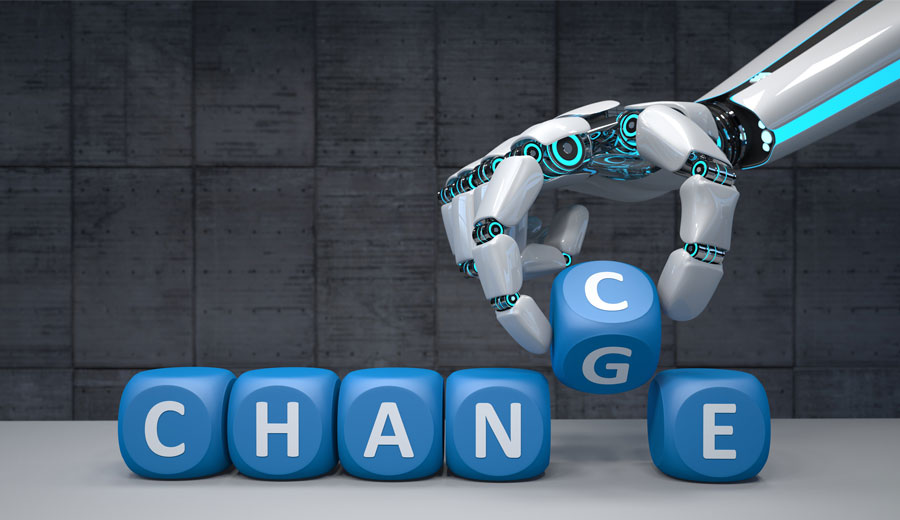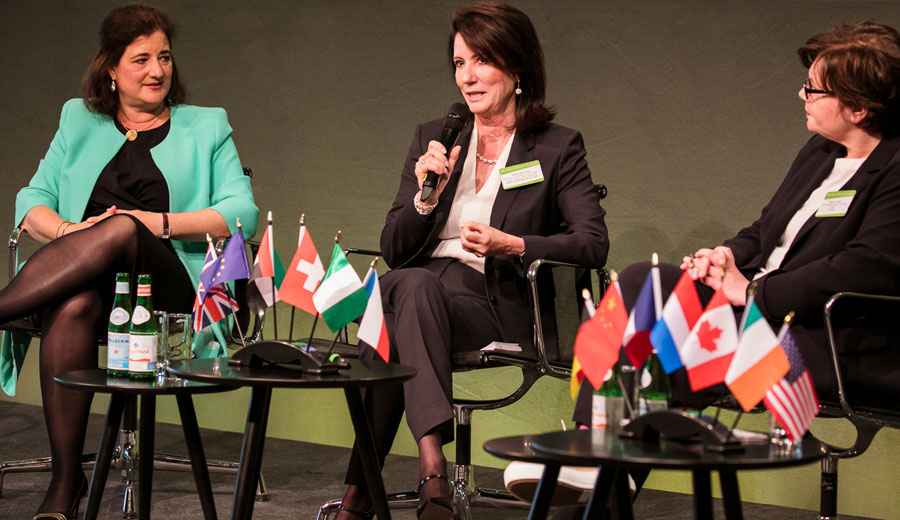
Robots Replacing Humans – These 6 Industries Started Already
Do you think a robot can take over your job someday? If you are in a management position, this will likely not happen in the next decade. However, many people like manufacturing workers and waiters fear robots replacing them.
According to a survey, 30% of the UK jobs are potentially under threat from the advances in Artificial Intelligence. At the same time, 38% of US jobs have a “high risk” of becoming obsolete by 2030.
In fact, it already started. Research has shown that robots are now taking over jobs in several industries. Not only car manufacturers or delivery systems are affected by this technology – also waiters, customer service and cleaning staff are facing an uncertain future.
We had a closer look at 6 industries that have already started wiping out some human jobs. In the following article, you will get insights into pioneering companies which employ robots in everyday business.
1. E-COMMERCE
Warehousing and shipping are main topics in the E-Commerce industry, especially for online retailers. Due to the fast-growing environment and rising volume of order, it is necessary to use robots in scarce labor departments like warehousing.
E-Commerce leader Amazon already has 30,000 fulfillment robots working in its warehouses worldwide. In 2012, the company acquired the robotic developer and manufacturer Kiva System for astonishing $755 million, which is now called Amazon Robotics. Due to this investment, it is no surprise that Amazon plans to replace employees who perform repetitive tasks with technology in the near future.
In order to reach that goal, Amazon established a robot challenge, where teams from all over the world can let their technology compete against other robots. The group with the robot that can recognize the right products, pick them up and put them in the correct box won $80,000 last year. What a great motivation for young people to develop profitable technology for Amazon’s future warehouse system.
2. FOOD
In the food industry, robots made its way into almost every aspect of the supply chain, from the field to the kitchen. In the agriculture, robot applications include planting, identifying and sorting seedlings. Also, robots in food manufacturing and packaging are not new – you probably have heard about or seen the documentaries about the current production of several tasty products.
Thus, robots revolutionize especially the restaurant sector. In 2016, the global company Pizza Hut opened a concept store in Shanghai called ph+ that hired two robot waiters. The machines welcome customers, show them their seats, take orders and deliver drinks. At the same time, they are capable of avoiding obstacles and designing delivery routes.
The head of the outlet store said in an interview that the restaurant could cut human resources by half with the help of these friendly droids. But Pizza Hut is not the only one saving real money with robots in restaurants. The online delivery service Just Eat for instance started using droids to deliver food in a part of London. Equipped with GPS and cameras, the robot can find its way to customers autonomously.
To sum up, robots in the food industry can be found from food processing to delivery. Given the fact that practicing companies get positive responses, it can be expected that customer service in this industry will also be strengthened with robots soon.
3. HOTEL
The hotel industry is not immune to robots replacing humans. Like the food industry, hotels use robots for simplifying their customer service. Basically, they are acting like little helpers that bring small orders like sandwiches or drinks to the hotel’s guests.
The Crowne Plaza San Jose-Silicon Valley Hotel in California for instance uses a touchscreen-faced droid and visitors love the concept. The principle is easy: If a guest demands French fries for example, the robot will pick them up at the kitchen, store it in a locking bin and use the elevator to bring it to the correct room. This service saves a lot of time for the hotel staff because they can focus on other more important tasks.
It does not only save labor time (and therefore money) – it is also a magnet for tourists preferring this futuristic hotel to others. But Crowne Plaza San Jose-Silicon Valley Hotel is not the only hotel group using robot staff. At Ghent Marriott Hotels, Mario the robot helps human hotel staff checking in guests and Wally the room service robot delivers food and drinks to rooms. This is robots replacing humans at its best.
Customer Service at a completely new level – would you prefer robot-run hotels too?
4. FASHION
Consumers demand low prices in the fashion industry and at the same time fair trade conditions in manufacturing. These two needs are hard to combine, but robots seem to be the solution.
Currently, the brand Adidas produces 400 million shoes per year – the majority being made by hand in Asia. More than nine million people across Southeast Asia are dependent on fashion jobs. If the fashion industry replaces them with robots, it will put people out of work.
Nevertheless, Adidas went the first step of bringing fashion production back to Europe and eliminating the six-week shipping time from suppliers in Asia to Europe. It opened a robotic manufacturing plant in Germany called the ‘Speedfactory’, which reduces costs of goods and makes them more accessible.
Adidas is not the only brand taking this step. The global company Zara for instance already operates 14 robotic factories in Spain, where robots do everything from cutting patterns to dying textile. The robots work so fast that it needs only 10 days for a product from the design stage to the sales floor.
How this development will affect Asian labor is another question that will be answered in the future. In short, robotic production in the fashion industry seems to be profitable and is predicted to be strengthened in the near future.
5. AUTOMOTIVE
Automotive is one of the first industries that started implementing automation in production. This is probably the reason why it is now the most advanced one when it comes to robots.
Tesla is currently building a new factory plant called ‘Gigafactory 1’ in the Nevada desert, which will be almost 100% automated in the near future. It is planned that robots will do the majority of production and only a few human workers to do the oversight. This is an astonishing step in manufacturing that will probably be adopted by other industries in the long term.
Production automation is not the only case where robots are used in the automotive industry. Vehicles themselves can also be constructed as robots.
Big companies like Uber and Google are already testing self-driving cars on the roads. The aim is to replace all human drivers with robots, which gives humans the option to use their driving time for more important things.
This progress of robots replacing humans in the automotive industry seems to be highly profitable both for businesses and consumers.
6. RETAIL
The retail industry is characterized by delivery, movement of goods and customer service. The latter are expected to be automated in the near future because big companies like Target and Best Buy already started employing with robots.
In downtown San Francisco, Target now uses stock-checking robots at one of its stores. The small droid quietly moves around the store to scan products and labels. Moreover, Best Buy tested a product-retrieving robot called Chloe at its store in Manhattan. After a customer ordered small items like CDs or headphones via a touchscreen, the machine brings their selection in seconds.
As you can see, robots can already organize the movement of goods in the retail industry to some degree. But also customer service faces change. At several Lowe’s group stores in San Francisco, multilingual droids already help customers locate products and keep tabs on inventory levels. As with most droids, these machines can work more efficiently and faster than humans in the same position. However, it will certainly take a long time for developers to improve robots’ communication, which is an important soft skill in customer service.
Now that you are aware of the 6 industries that already started with robots replacing humans – do you appreciate this development? We look forward to know more about this exciting progress in several industries and will continue discussing the topic at the Global Female Leaders Summit.
We hope that you are not afraid of the rise of the robots. We are still convinced that human experience stays central to business success.
If you like this article, leave a comment or share it on social media!
Comments
No Comments

